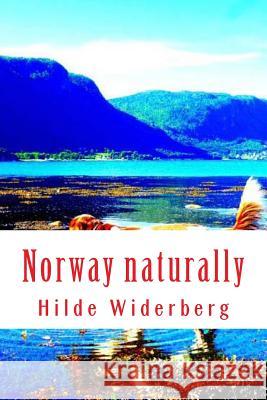Norway naturally » książka
Norway naturally
ISBN-13: 9781496109132 / Angielski / Miękka / 2014 / 36 str.
This is an ironic portrait of Norway. Norway is a Scandinavian unitary constitutional monarchy whose territory comprises the western portion of the Scandinavian Peninsula, Jan Mayen, the Arctic archipelago of Svalbard, and the sub-Antarctic Bouvet Island. Norway has a total area of 385,252 square kilometres (148,747 sq mi) and a population of a little above 5 million. It is the 2nd least densely populated country in Europe. The country shares a long eastern border with Sweden (1,619 km or 1,006 mi long), which is the longest uninterrupted border within both Scandinavia & Europe at large. Norway is bordered by Finland and Russia to the north-east, and the Skagerrak Strait to the south, with Denmark on the other side. It shares maritime borders with Russia by the Barents Sea; Greenland, the Faroe Islands, and Iceland by the Norwegian Sea; and Sweden, Denmark, and the United Kingdom by the North Sea. Norway's extensive coastline, facing the North Atlantic Ocean and the Barents Sea, is laced with fjords, a renowned part of its landscape. The capital city Oslo is the largest in the nation, with a population of 630,000. Norway has extensive reserves of petroleum, natural gas, minerals, lumber, seafood, fresh water, and hydropower. Two centuries of Viking raids to southern and western areas tapered off following the adoption of Christianity in AD 994. Norway expanded its control overseas to parts of Britain, Ireland, Iceland, and Greenland. Norwegian power peaked in 1265, but competition from the Hanseatic League and the spread of the Black Death weakened the country. In 1380, Norway was absorbed into a union with Denmark that lasted more than four centuries. In 1814, Norwegians resisted the cession of their country to Sweden and adopted a constitution. Sweden went to war with Norway but agreed to let Norway keep its constitution in return for accepting the union under a Swedish king. Later Norway demanded independence, which it gained in a referendum in 1905. Norway remained neutral in World War I. Despite its declaration of neutrality in World War II, Norway was occupied for 5 years by forces of Nazi Germany. In 1949 it abandoned neutrality, becoming a founding member of NATO. Discovery of oil in adjacent waters in the late 1960s boosted Norway's economic fortunes. The country maintains a welfare model with universal health care, subsidised higher education, and a comprehensive social security system. Key domestic issues include maintaining the country's extensive social safety net with an aging population and preserving economic competitiveness. The petroleum industry accounts for around a quarter of the country's gross domestic product. King Harald V is Norway's head of state and Erna Solberg became Prime Minister on 16 October 2013, replacing Jens Stoltenberg, and the government made a shift from being a labour to a conservative government. It has administrative subdivisions on two levels, known as counties (fylke) and municipalities (kommuner). The Sami people have a certain amount of self-determination and influence over traditional territories through the Sami Parliament and the Finnmark Act. Norway maintains close ties with the European Union and its member countries (despite rejecting full EU membership in two referenda), as well as with the United States. Norway participates with United Nations forces in international missions, notably in Afghanistan, Kosovo, Sudan, and Libya. Norway is a founding member of the United Nations, NATO, the Council of Europe, and the Nordic Council; a member of the European Economic Area, the WTO and the OECD; and is also a part of the Schengen Area."
Zawartość książki może nie spełniać oczekiwań – reklamacje nie obejmują treści, która mogła nie być redakcyjnie ani merytorycznie opracowana.











